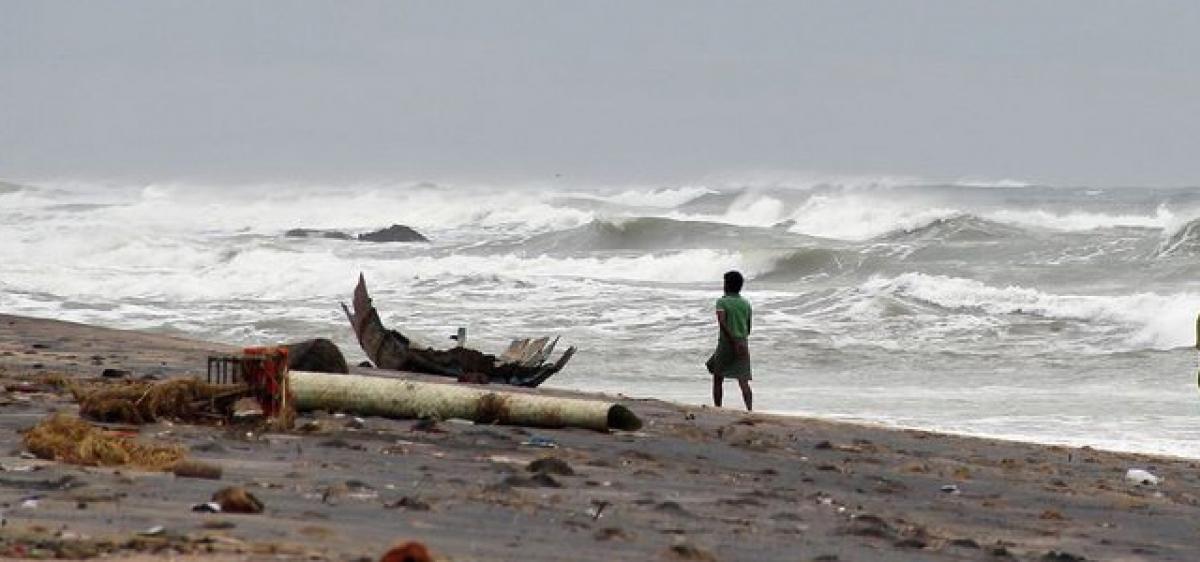Just In

Andhra Pradesh coast once again faces the threat of yet another fury as the Kyant Cyclone is moving slowly but steadily towards the coast. The state with 974-km coast is vulnerable to cyclones of varying intensity during this period.
Andhra Pradesh coast once again faces the threat of yet another fury as the Kyant Cyclone is moving slowly but steadily towards the coast. The state with 974-km coast is vulnerable to cyclones of varying intensity during this period.
The state political leadership and administration is well-equipped to handle any such eventuality with its proven record and versatile experience in dealing with such disasters. However, every such situation is likely to throw up new and unforeseen challenges. There is no room for complacency.
An effective communication infrastructure is a pre-requisite for mitigating the disaster effect. Multiple forms of communication network should be pressed into service. A meaningful and effective partnership with media will help in preventing rumour and scaremongering.
Of late, media is also displaying a sense of responsibility while covering disasters. But, lack of credible information coming from official channels compels media to rely on unsubstantiated reports.
One of the critical short-term cyclone disaster mitigation measures is timely warning to the affected population and the officials connected with disaster management. The state government has rightly alerted the administration in the entire coastal belt to be prepared for the worst.
User-specific timely warnings issued by the Met department to various users like government agencies, ports, fishermen, merchant navy, media, farmers, general public, etc., should be properly and effectively shared. Such last-mile communication connectivity is vital for cyclone preparedness.
An important aspect of cyclone risk reduction is to ensure availability of adequate numbers of shelters, community centres/school buildings, places of worship, etc., which can be utilised for moving people from vulnerable areas to safety.
Besides this, the structural safety of various lifeline infrastructure such as roads/culverts/bridges, communication and transmission towers, power houses, water towers and hospitals should be ensured, so that the communication system at all levels remains useable, electricity and water supply systems do not break down and adequate medical attention is possible.
Quality relief supplies should immediately be rushed to vulnerable locations as cyclone onset can disturb transport network. The urgent task is to be ready with essential food supplies, drinking water, life-saving medicines, etc. The official machinery should be geared up to implement standard operating procedures as cyclone management cannot always respect bureaucratic hierarchy.
In case of cyclone hitting the coast, leaving a trail of destruction, the immediate task should be restoration of infrastructural facilities like road, power, communication etc. Procurement of men and materials for the restoration of infrastructural works should be taken up on a war-footing.
Supply chain efficiency has to be augmented to prevent hindrances in rushing relief supplies and preventing hoarding of essential supplies.
India has been witnessing a wave of philanthropy during such disasters. Any cyclone of greater intensity is obviously beyond the reach of government machinery. But, proper networking with private sector and civil society organisations could be of immense help to channelise the relief work for optimal impact.
Many such guidelines issued by the National Disaster Management Authority (NDMA) and other agencies deeply engaged in cyclone mitigation effort should be meticulously adhered to. Meanwhile, let us all hope that such a natural disaster is averted.

© 2024 Hyderabad Media House Limited/The Hans India. All rights reserved. Powered by hocalwire.com







